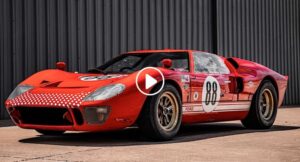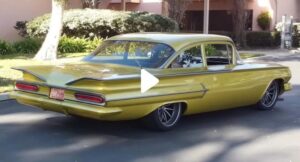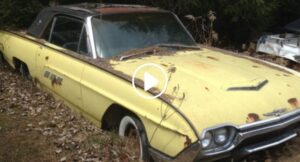In the realm of automobiles, certain models transcend their role as mere transportation and become symbols of a culture and era. The 1973 Volkswagen Brasília is one such vehicle. Born in Brazil during a period of profound change and innovation, the Brasília is a compact car that captured the hearts of a nation and left an indelible mark on automotive history. In this article, we delve into the story of the 1973 Volkswagen Brasília, exploring its design, cultural significance, impact, and enduring legacy.
Brazil in the 1970s: A Time of Transformation
To understand the significance of the Volkswagen Brasília, one must first grasp the socio-economic and cultural context in which it emerged. The early 1970s marked a transformative period for Brazil. The country was undergoing rapid urbanization and industrialization, which created new opportunities and challenges. As more people moved to cities, the demand for affordable, efficient, and compact transportation grew.
This period also witnessed the Brazilian government’s efforts to promote domestic manufacturing and reduce dependence on imports. As part of these efforts, they introduced the Nationalization Plan in 1973, which aimed to stimulate the production of vehicles within Brazil’s borders.
Designing the Brasília: Beauty in Simplicity
The Volkswagen Brasília was conceived as a response to the changing needs and desires of Brazilian consumers. Its development began in the late 1960s, and it was officially launched in 1973. The car was designed to cater to the growing demand for compact, fuel-efficient, and affordable vehicles.
The Brasília’s design was a blend of simplicity and practicality. Its compact dimensions made it well-suited for urban driving, allowing it to navigate through narrow streets and crowded traffic. The car featured clean, unadorned lines and a distinctive angular rear end, which became one of its defining characteristics.
Inside, the Volkswagen Brasília was surprisingly spacious for its size. The cabin was designed to maximize passenger comfort and cargo space, making it a practical choice for families and urban commuters alike. The seating was comfortable, and the layout was functional, ensuring that the driver and passengers had a pleasant experience during their journeys.
Mechanical Innovation: A Reliable Workhorse
Under the hood, the Volkswagen Brasília was equipped with a 1.6-liter air-cooled engine. This engine, borrowed from the Volkswagen Type 3, was renowned for its durability and reliability. It produced a modest yet sufficient amount of power, making the Brasília an ideal choice for daily commuting and city driving.
One of the mechanical innovations of the Brasília was its use of a transversely mounted engine, which allowed for more cabin space and efficient use of the compact design. Additionally, its rear-engine, rear-wheel-drive configuration provided excellent traction, particularly in wet or challenging road conditions.
Cultural Significance: The People’s Car of Brazil
The Volkswagen Brasília quickly earned a special place in the hearts of Brazilians. It was more than just a car; it was a symbol of progress, modernity, and aspiration. At a time when many Brazilians were seeking affordable transportation options, the Volkswagen Brasília was priced competitively. It allowed more people to access the benefits of personal mobility, enhancing their quality of life.
The Brasília was designed to be a versatile vehicle, capable of serving as a family car, a taxi, a delivery vehicle, and more. Its adaptability made it an attractive choice for various purposes. With its compact size and efficient air-cooled engine, the Brasília was relatively fuel-efficient. This was particularly important during a period of rising fuel costs and economic uncertainty.
The Brasília’s reputation for reliability and ease of maintenance endeared it to Brazilian consumers. Many owners found that the car required minimal repairs and offered dependable performance. The Brasília’s unique rear-end design, often likened to a suitcase, gave it a distinct appearance that set it apart from other cars on the road. This design element contributed to its recognition and popularity.
Impact on Brazilian Society
The impact of the Volkswagen Brasília extended far beyond the realm of automotive culture. It played a significant role in shaping Brazilian society and influencing various aspects of life:
As cities in Brazil continued to grow, the compact and maneuverable Brasília became a preferred choice for urban commuting. It facilitated the movement of people within cities and contributed to the development of urban transportation networks.
The production of the Brasília, which involved a network of local suppliers, created jobs and stimulated economic growth in Brazil. This economic impact was in line with the government’s Nationalization Plan, which aimed to boost domestic industries.
Due to its spacious interior and reliable engine, the Volkswagen Brasília became a popular choice for taxi services in Brazil. It became a common sight on the streets of Brazilian cities, serving as an essential means of transportation for residents and visitors alike.
The Brasília became a symbol of Brazilian identity and ingenuity. Its distinct design and widespread use in Brazil’s urban landscape contributed to its cultural significance. It featured in films, music, and literature, solidifying its place in the nation’s cultural fabric.
The Enduring Legacy of the Volkswagen Brasília
Though the production of the Volkswagen Brasília ceased in the early 1980s, its legacy lives on. Decades after its introduction, the Brasília continues to be celebrated and remembered for its role in shaping Brazilian society and automotive culture.
The Brasília has earned a place among collectors and enthusiasts, both in Brazil and internationally. Well-preserved examples are highly sought after, and the car is often featured in classic car shows and exhibitions.The Brasília continues to be referenced in popular culture. It appears in films, television shows, and music, evoking nostalgia for a bygone era.
The unique rear-end design of the Brasília has inspired designers and artists, both in Brazil and beyond. It remains an iconic example of automotive design. Community and Clubs: Enthusiasts of the Brasília have formed clubs and communities dedicated to preserving the car’s history and heritage. These groups organize events, share information, and celebrate their shared passion for the vehicle.
Conclusion
The 1973 Volkswagen Brasília stands as a testament to the power of automotive design to shape culture and society. Born in an era of transformation in Brazil, it became more than just a car; it became a symbol of progress, modernity, and aspiration. With its distinctive design, affordability, versatility, and reliability, the Brasília left an indelible mark on Brazilian society, impacting everything from urban mobility to cultural identity. Decades after its production ceased, the Brasília’s enduring legacy is a testament to its enduring appeal and the profound impact it had on the lives of countless Brazilians.





